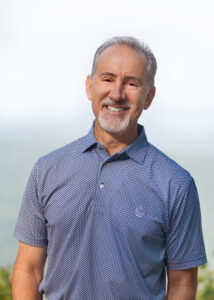The ketogenic diet — keto for short — is everywhere these days. If you are looking to lose weight or feel healthier this New Year, this high-fat, low-carbohydrate diet just might bring the results you are looking for
In his new monthly wellness column, Vance Ferrigno, The Cliffs Senior Exercise Physiologist, breaks down the science behind this trending diet plan:
 For the past 5 years, I have been advocating for a high fat, moderate protein and low carbohydrate diet. As a formally trained exercise physiologist, this lifestyle change represented a pretty big shift for me. My field advocates for just the opposite, which I had been fully onboard with until I started having health issues, stage 3 adrenal fatigue being the most notable.
For the past 5 years, I have been advocating for a high fat, moderate protein and low carbohydrate diet. As a formally trained exercise physiologist, this lifestyle change represented a pretty big shift for me. My field advocates for just the opposite, which I had been fully onboard with until I started having health issues, stage 3 adrenal fatigue being the most notable.
Now, to be fair, the adrenal fatigue was in part due to the excessive cardio training I had been doing for the previous 13 years (the detriments of excessive cardio training is another issue I will tackle in another article!) but I mistakenly fueled those hard rides and runs on carbs because my field told me it was the best thing for health and performance.
HOW DOES THE BODY PROCESS CARBOHYDRATES?
To evaluate the benefits of a ketogenic diet, let’s begin by looking at the way the body processes carbohydrates. Upon ingesting any carbohydrate — whether a healthy baked sweet potato or sugary chocolate candy — the carb is broken down into glucose which floods the blood stream. A healthy, fibrous vegetable has a lower glycemic effect, meaning it will release the glucose at a slower rate than chocolate, but it still becomes glucose.
The body responds to the surge of glucose by releasing insulin from the pancreas to bring the glucose from the blood into the cells to be stored as glycogen in the muscles or liver. The only problem is that the “storage containers,” if you will, for glycogen in both the muscles and liver are very small. Unless you are doing a lot of cardio training, your stores are full so there is nowhere for this glucose to go. When this happens, the body converts this glucose to triglycerides, which are then stored as body fat. When you consume carbohydrates in your breakfast, lunch and dinner, as well as in snacks day after day, you begin to accumulate fat stores. In addition to these fat stores we all know and love, excessive blood glucose and elevated insulin can cause a host of other harmful diseases.
HOW MUCH IS TOO MUCH?
To prevent excessive blood glucose and elevated insulin levels, a reasonably active person needs no more than 150 grams of carbohydrates per day. Sedentary individuals — and this includes someone who does an hour of moderately intense exercise per day but then sits at a computer for the next 8-9 hours — needs no more than 100 grams or even less.
Although ideal carbohydrate intake amounts will vary from person to person, it is generally under 50 grams per day that your body starts producing ketone bodies which it will use for energy. Thus, the state of ketosis, that trendy buzzword.
WHAT ARE THE BENEFITS OF KETOSIS / THE KETOGENIC DIET?
- Fat Loss. Most people I know who have “gone keto” do so in an attempt to lose weight. A high-fat, low-carb ketogenic diet helps with fat lose in a couple of ways:
- It stabilizes the appetite hormone ghrelin which tells you are hungry. It also controls the wild swings in blood glucose and subsequent insulin release that drives hunger when the blood sugar drops too far or too fast.
- It regulates hormone sensitive lipase, which controls the metabolic processes that prioritizes using fat for energy, and
- It has a high satiety factor due to the high fat content of the diet, meaning you can feel fuller longer after consuming less food.
- Anti-Inflammatory Effect. The “Standard American Diet” (SAD) promotes inflammation due to the excessive amount of omega 6 fatty acids found in processed food. As inflammation is the underlying cause of most diseases, this is a huge deal. It appears the ketones disrupt the inflammation process, in essence nipping it in the bud before it can cause damage.
- Improves Immune Function. As is seen in fasting, a ketogenic diet augments a process called autophagy. Autophagy is the natural detoxification process where the body cleans up unhealthy cells.
- Brain Function. One of the general arguments against limiting carbohydrates that I have heard through the years is that the brain needs glucose to function. Studies show that is not entirely true. Although glucose is the primary source of energy for the brain, that is primarily because we consume a high carb diet and glucose is readily available. When carbs are restricted, ketones become the primary source of energy for the brain and, as it turns out, the brain functions extremely well on ketones.
I have heard and read numerous times from proponents of the ketogenic diet, and most recently from a member of The Cliffs, who state that they have more energy and mental clarity since moving to a keto lifestyle. It also appears that the anti-inflammatory effects hold true in the brain and there is even evidence that brain homeostasis is improved.
Lastly, it is fairly well known much of the damage done to the brain cells, as well as cells throughout the body, is from the glycation effects of too much circulating glucose. Glycation is the binding of glucose to proteins ultimately damaging their ability to function properly — this is not a good thing to happen anywhere but especially the brain!
HOW DO I FEEL ON THE KETOGENIC DIET?
When I first moved to a low-carb diet in 2013, I thought it would be difficult and that I would miss breads and pasta… but I never really did. And although I stayed low-carb through the week, I would still relax on the weekends with occasional pizza outing or a dessert. Doing so kicked me out of the state of ketosis if I was in it.
To see how well I felt in ketosis for a sustained period, I spent eight weeks in ketosis last year. The results? I was very pleased with how I felt in during this period as I was never hungry, my energy levels were fine, and I experienced the mental clarity many proponents report.
The recipes I used from the books that guided me were delicious and easy to prepare. I lost 5 – 6 pounds and 3% body fat over the eight weeks. A member of The Cliffs that I work with also went along on this ketosis trip with me and has lost 26 pounds and three inches off his waist.
What I think has surprised me most is that when I ended the state of ketosis just recently, I was visiting family in FL and decided to have pizza in my favorite pizza place. I wasn’t willing to forgo pizza or dessert forever, but after I finished the pizza the thought of it was better than eating it. Even the thought of my favorite dessert — carrot cake — isn’t as alluring as it once was.
This seems to be a common thread from people coming off this program as you are changing your taste buds away from sugary foods. I know that if I indulge in it even occasionally I will re-acquire the taste for it, which usually drives eating it more frequently, which I have no desire to do.
Instead, I find myself desiring the higher fat recipes I have been using. My new favorite dessert is coconut milk whipped up with a little maple syrup over blueberries and strawberries and topped with shaved almonds. It’s healthy, satisfies my desire for something a little sweet, and my blood sugar barely moves after eating it, which means I’m not getting that insulin dump that causes so many issues.
HOW SHOULD YOU GET STARTED?
Of course, you should always consult your physician before making significant diet or lifestyle changes. If trying this program interests you, I highly recommend reading The Keto Reset Diet by Mark Sission and Low Carbohydrate Living by Jeff Voleck, PhD, RD and Dr. Stephen Phinney, MD, PhD. They are excellent resources for the science behind low carb living and The Keto Reset provides six weeks of meal plans and easy to follow recipes.
To arrange a consultation or training session with Vance Ferrigno, contact him at 864.420.8261 or vferrigno@CliffsLiving.com.





